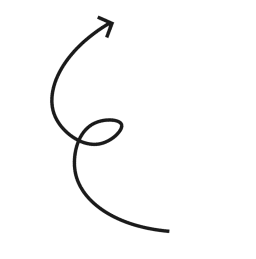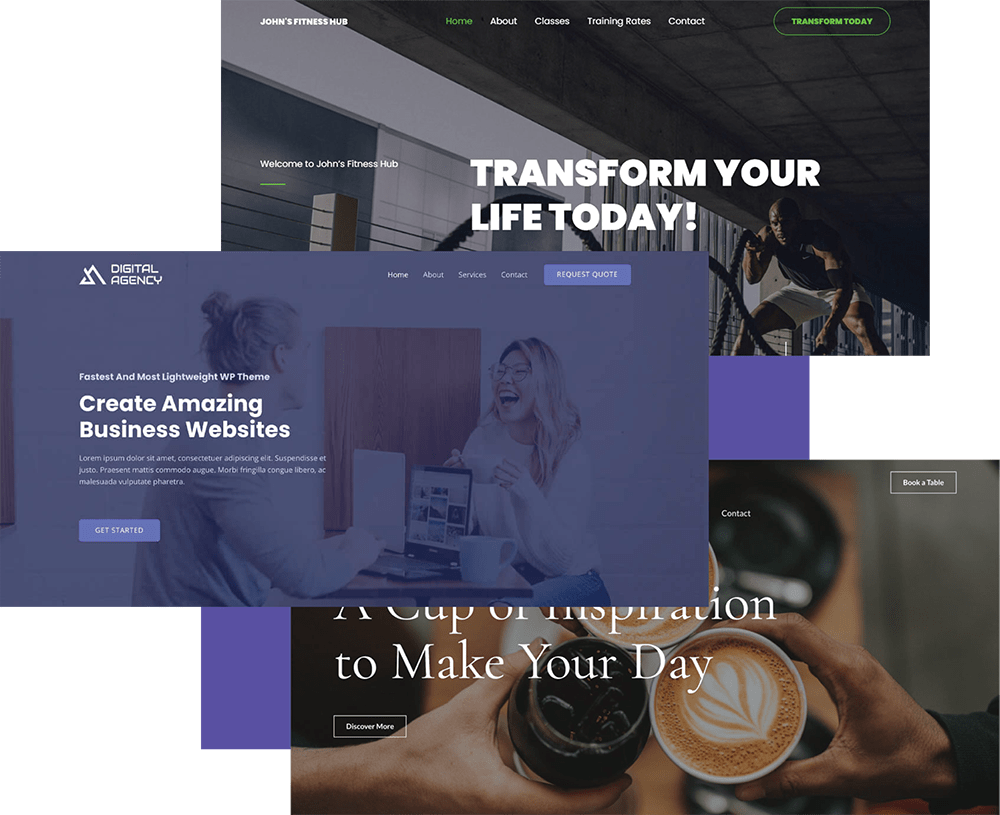Why would anyone hire a web designer in 2025? It’s a fair question — and one that more people are asking every day.
After all, with AI tools pumping out sleek layouts in seconds, drag-and-drop builders that feel like playing with digital Lego, and “one-click” website generators promising to launch your site before your coffee cools, the whole process seems faster, cheaper, and “good enough” for most.
So yeah, on the surface, it kind of sounds like the job of a web designer is… well, done.
But here’s the twist: it’s not. In fact, web designers might be more important now than ever before.
Because while technology has made it easier to build a website, it hasn’t replaced the creativity, strategy, and human understanding it takes to build a great one.
So, do we still need web designers? Yes — and I’m here to tell you all the reasons why.
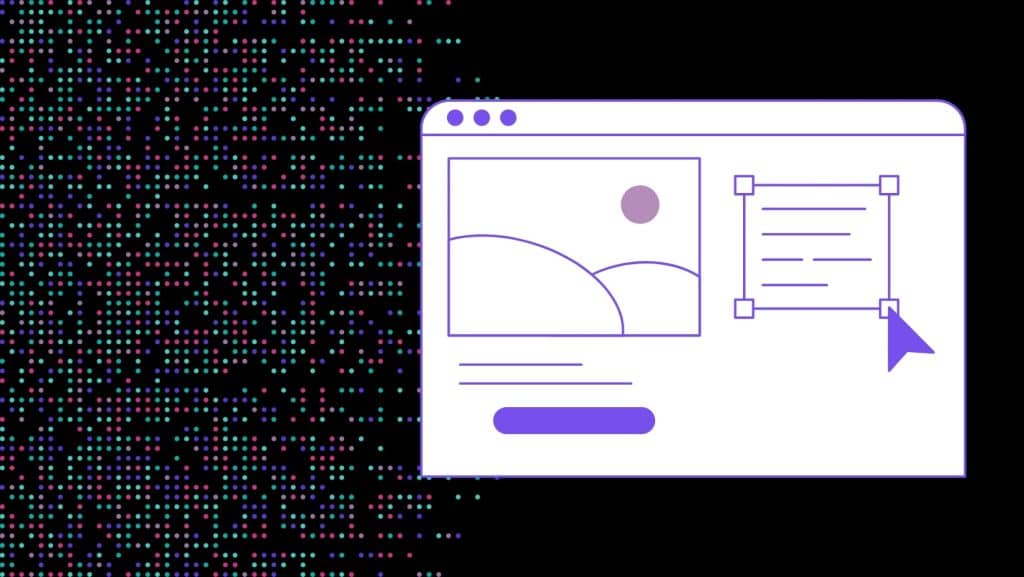
The Rise of DIY Website Builders and AI
Not that long ago, building a website felt like trying to climb a mountain with no map. You either had to learn how to code from scratch or you had to pay someone who already knew the ropes.
Then came a major shift. Tools like Wix and Squarespace showed up, handing people the keys to their own websites — no coding required.
WordPress themes exploded onto the scene too, giving even more flexibility and choice. Suddenly, almost anyone could have a decent-looking website up and running with just a few clicks.
Now, things have been taken even further.
AI site generators promise to skip the entire design phase altogether. You type a few sentences about what you want, and AI will whip up a complete site for you in minutes — logos, layouts, even content suggestions. It is fast. It is cheap. And it is tempting.
What These Tools are Good At
To be fair, these DIY tools and AI platforms absolutely get a few important things right:
- They are quicker compared to traditional development.
- They make website building more convenient than ever.
- They slash costs dramatically, making websites accessible to more people.
But here is where the shine starts to fade.
What These Tools Don’t Get Right
DIY or AI tools also come with a set of hidden trade-offs that are not always obvious at first glance:
- Generic Look and Feel: Most websites built with DIY platforms tend to look… the same. When every site follows a similar formula, it gets harder to stand out or create a memorable brand presence. If uniqueness is key to success — and it usually is — this sameness can be a real setback.
- Poor UX Decisions Baked In: DIY tools are built to be one-size-fits-all, but users and businesses are anything but one-size-fits-all. That means UX (user experience) often suffers. Poor navigation flows, confusing calls to action, cluttered layouts, and slow load times can all sneak in without you realizing it. You might think your site looks good, but your visitors could be bouncing out of frustration. DIY sites often skip that careful thought.
- Serious Flexibility Limits: Need a feature that is not already built-in? Want a layout that bends the rules a little? Tough. Many DIY platforms either make it painfully complicated or straight-up impossible without expensive add-ons or custom code. What felt easy at first suddenly becomes a major bottleneck.
- “Design by Algorithm” Is Not the Same as “Design with Intention”: A professional designer thinks about emotional connection, storytelling, visual hierarchy, accessibility — all the subtle things that create a powerful user experience. “Design by algorithm” can fill in the blanks, but it cannot replace the human strategy that makes design resonate on a personal level. A site made by AI might look decent, but it rarely feels meaningful.
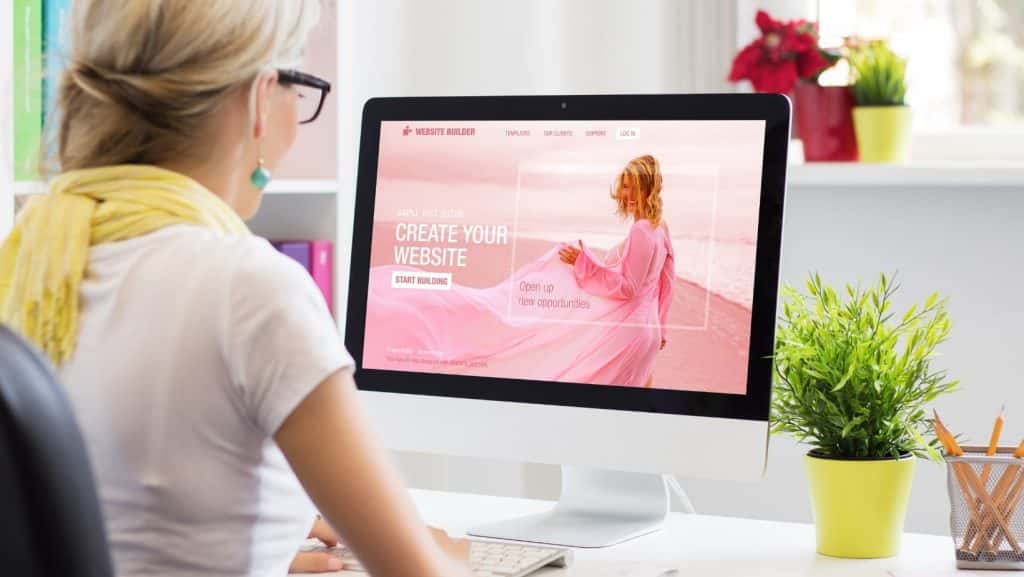
What a Web Designer Actually Does (That AI Doesn’t)
When people hear “web designer,” they often imagine someone just picking color palettes, choosing fonts, and making things look pretty. But the truth is, real web design is a lot deeper and way more strategic than just playing with aesthetics.
Here is what a real web designer actually brings to the table, and why AI tools are nowhere close to replacing them:
Understanding Your Goals
A designer does not just slap together a homepage and call it a day. They take the time to understand what you are really trying to achieve.
Are you trying to get more leads? Sell products? Build a community? Every design decision they make points back to your goals.
User-Focused Design
Good web design is not just about what looks good on a screen. It is about how a real human being feels when they land on your site.
A designer thinks carefully about user journeys: where visitors start, where they want to go, and how to guide them there without confusion or frustration.
AI can guess, but a designer can think it through.
Design Systems and Consistency
Ever been on a site where every page felt like it was made by a different person? That is what happens when you do not have a proper design system.
A professional designer creates rules and patterns that make your entire site feel cohesive, intentional, and trustworthy, not like a patchwork of random ideas glued together.
Adaptability
Real-world projects are messy. Brand styles evolve, product priorities shift, and sometimes the “best practice” does not actually fit your brand’s voice.
A human designer knows when to bend or break the usual rules to do what is right for you. AI, on the other hand, just follows instructions without the flexibility to read between the lines.
Human Feedback Loop
This might be the biggest thing AI simply cannot match: collaboration. A web designer can listen to your ideas, hear your concerns, suggest better options you might not have thought of, and adjust the work as your vision evolves.
They are your creative partner, offering collaboration and real-time insight that tools alone cannot fully provide. While AI can generate ideas to some extent, a designer brings thoughtful conversations and deeper understanding to the process.
At the end of the day, a web designer does not just build a website. They build a bridge between your brand and the people you are trying to reach. It is strategy, creativity, empathy, and experience — all rolled into one. And for now, no AI can touch that.
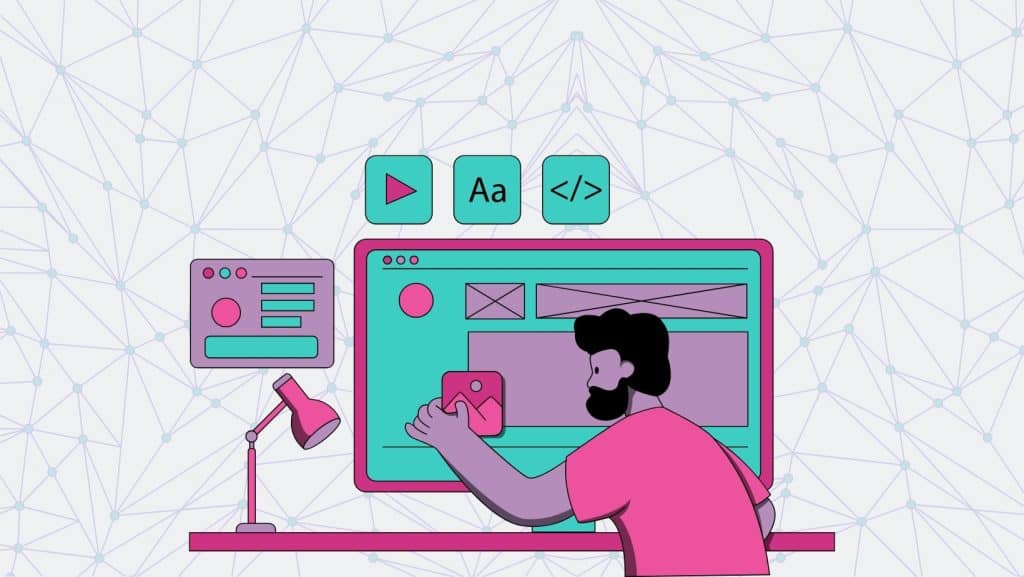
The Problem With DIY Websites
DIY website builders are great… until they are not. They have opened the doors for so many people to get online quickly and affordably.
Pick a design, tweak a few things, upload your images, and just like that, you have a website. In many ways, they have made building a web presence more accessible than ever, and that is something to celebrate.
But when your website needs to do more than just exist, when it needs to build real trust, drive real action, and truly reflect your brand, DIY solutions can start to feel a little… limiting.
For example, here is what tends to happen with DIY websites in the real world:
- A local service business launches a clean-looking site but struggles to get people to actually book or call. The problem is not how it looks — it is that it lacks those subtle, strategic calls to action that naturally move a visitor to take the next step.
- An artist or freelancer builds a portfolio using AI tools. It looks polished, sure. But without custom touches and personality woven throughout, it risks blending into a sea of similar sites, and that critical emotional connection with the audience gets lost.
- A nonprofit sets up a simple website with the basics, but it is not enough. Potential donors and supporters need to immediately feel trust, understand the mission, and see the impact. Without thoughtful design choices around messaging, layout, and emotional cues, that trust can be harder to earn.
It is not that the DIY approach is bad — far from it. These tools are powerful starting points. But they are just that: starting points. The part that matters most — the part that turns a website from “pretty good” to “absolutely right” — comes down to nuance.
It is about the careful choices: how information flows, how emotion is triggered, how credibility is quietly established through small design signals. These are the things that AI alone cannot fully deliver, no matter how polished it seems at first glance.
DIY website builders can get you on the web quickly and easily. But building a site that feels alive, trustworthy, and truly you? That still takes a deeper level of craft.
And that is where professional web designers continue to make all the difference — not because DIY is wrong, but because sometimes, your brand needs more than one-size-fits-all.
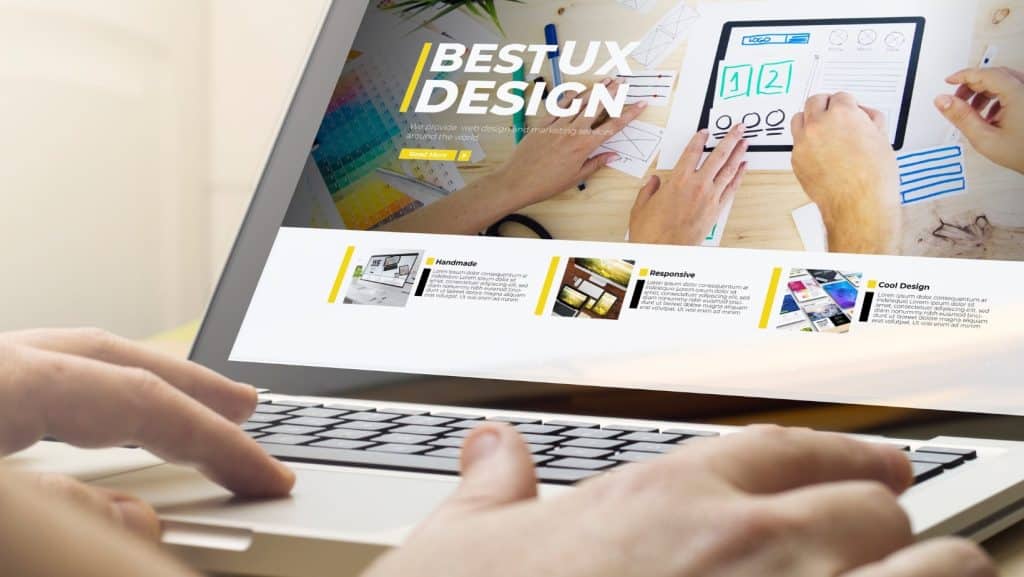
A Real Designer Can Still Use Templates (Just Better)
Templates are not the problem — how you use them is what really matters. In fact, a real designer knows that templates can be incredibly smart tools.
They offer a strong foundation: the right structure, the right flow, the right basics already in place. But the magic happens in how that foundation is shaped, refined, and personalized.
This is where ShiftWeb’s approach comes in: affordable, semi-custom design built on smart templates.
Instead of starting from scratch every time, which can be expensive, slow, and sometimes unnecessary for small businesses, a designer can take a solid template and turn it into something that feels custom, intentional, and personal to the client’s needs.
The big benefit? Instead of reinventing the wheel, you get the best of both worlds: the speed and structure of a template, with the thoughtful, hands-on touch of a real designer.
The difference?
A good designer knows how to work with constraints, not against them. They know which details to keep simple and where to add the little customizations that make a huge impact.
Real designers do not complicate things — they simplify what matters most. They cut through the noise, polish what needs polishing, and make sure your site feels clean, clear, and completely aligned with your goals.
So yes, templates are still part of the conversation. However, in the hands of someone who deeply understands design, a template becomes more than just a starting point. It becomes a tailored, strategic experience that feels effortless to the user but has real thought and expertise behind it.

Web Designers Create Sites That Convert
These days, anyone can spin up a beautiful website with AI or a drag-and-drop builder. But here is the thing nobody tells you: a fancy-looking site that does not actually convert — that does not move people to buy, call, or sign up — is still a bad site.
Design is not just about making things pretty. It is about making things work. That is the part the tools miss.
Designers Understand Strategy
They think beyond colors and fonts. They know how to guide a visitor from “just looking” to “let’s talk.” They map out the user journey so every button, every page, every word helps people take the next step, without feeling pushed or confused.
Designers Ask The Right Questions
What is the real goal of your website? Is it to get more leads? Build a mailing list? Sell a product? AI does not ask you that. It just assumes you want something “professional-looking.”
A good designer digs in. They figure out what your business actually needs — and then they build a site that makes that happen.
At the end of the day, the tools you use do not matter nearly as much as the results you get. A website should not just exist; it should perform.
It should feel effortless for your visitors and bring real value to your business. That is what great designers focus on. And that is why we still need them now more than ever.
Who Should Still Hire a Web Designer?
So does anyone still need a real web designer? The answer is now quite evident: yes, absolutely.
Here’s the thing: Not everyone needs a custom design from scratch, but there are some situations where hiring a pro is not just smart — it is the best move you can make.
If any of these sound like you, bringing in a designer could save you a lot of time, stress, and missed opportunities:
1. You’re Starting a Serious Business and Want to Look Trustworthy
When you are asking people to invest in you, whether it is buying a product, booking a service, or trusting your expertise, you cannot afford to look amateur.
First impressions happen fast online, and a great-looking site can be the difference between someone clicking away or becoming a loyal customer.
If someone lands on your site and it looks thrown together or outdated, they are gone in seconds — maybe forever. Whereas a professional design immediately sends the message that you are credible, capable, and committed.
2. You’re Overwhelmed by Options and Just Want It Done Right
The internet is overflowing with DIY tools, but more choices often just mean more confusion. Should you pick WordPress, Wix, Squarespace, Shopify? Which plugins? What layout? How mobile-friendly?
It is easy to get stuck in decision paralysis — that is normal. A web designer can take that weight off your shoulders by guiding you to the right solutions without spending hours second-guessing every little detail.
3. You Tried DIY and Hated Every Minute of It
At first, doing it yourself might seem like a fun challenge or a way to save money. But halfway through wrestling with layouts, fonts, colors, and plug-ins, a lot of people realize it is not so fun after all.
If you have been there, no judgment. Building a website that looks great and works properly is hard. A web designer not only spares you the frustration but also gives you back your time, so you can focus on what you do best instead of getting stuck in tech headaches.
So, if trying to DIY made you want to throw your laptop out the window, that is a pretty clear sign it is time to call in someone who actually loves doing this stuff — and knows how to do it well. (That’s us!)
4. You Want to Stand Out in a Sea of Sameness
If you are serious about standing out — about making an impression that sticks — you need a site that feels like you, not just a copy of a thousand others.
A web designer can craft a custom experience that shows off your brand’s personality, voice, and style, helping you grab attention and keep it. They can give you a significant edge in a crowded market, making your brand more memorable.
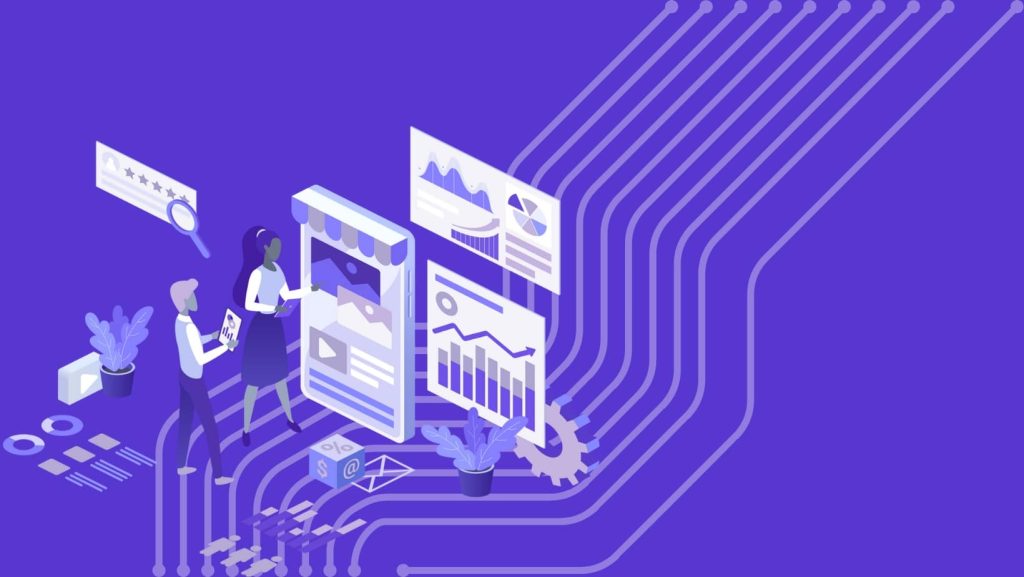
A Look Ahead: Web Designers Are Evolving Too
It is easy to think that with all the AI tools and drag-and-drop builders out there, web designers might be on their way out. But the truth is, they are evolving fast.
Today’s web designers are no longer just pushing pixels around. They are part strategist, part storyteller, and part tech guide. They consider how your website fits into your brand, how it connects emotionally with your audience, and how it helps you hit your business goals.
Many designers are also embracing AI, but not in the way you might expect. They are not handing over the keys and letting the robots take over.
Instead, they are using AI to speed things up — automating repetitive tasks, generating ideas faster, and making space for the creative and strategic thinking that machines just cannot replicate.
The future of web design is not about “no more designers.” It is about a new generation of smarter, more efficient, and more adaptable designers who know how to blend creativity, technology, and strategy into one powerful package.
At ShiftWeb, we are excited to be part of this evolution, bringing you affordable, modern web design that feels personalized, thoughtful, and future-ready.
TL;DR: Web Designers Are Still Here. Still Worth It
Despite what you might hear, web designers have not disappeared; they have adapted. The tools have changed, the trends have shifted, but the need for smart, skilled design has only gotten bigger.
That said, you do not always need to shell out thousands to get a great website. What you do need is someone who knows how to bring your vision to life, someone who can make sure your site does more than just exist — it stands out.
In today’s digital noise, a thoughtful, human-crafted site is not just a bonus — it is a competitive advantage. That is the real difference a web designer brings compared to DIY tools.
But if you want the best of both worlds, we have got you. Choose a website template that matches your style, and we will tailor it to fit your business — quickly, affordably, and without the stress. Yes, it’s that simple!



